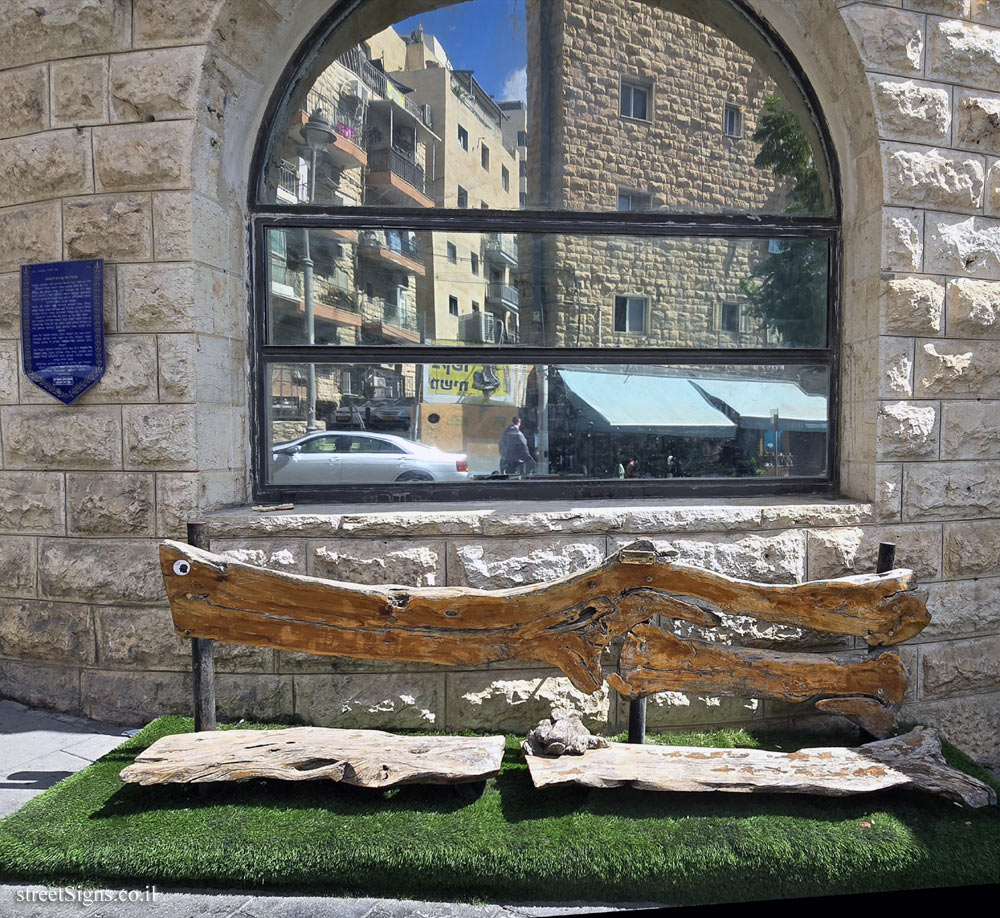The bench was photographed on the same day by the same photographer
 Click for a larger image Translation of the text on the sign
Click for a larger image Translation of the text on the sign:
with God’s help
October 2017
The story of a Jerusalem olive tree July 67. Masses of Israelis flock to the Old City and the Wall immediately after the end of the Six Day War and the unification of Jerusalem.
Moshe Dayan, the Minister of Defense at the time, ordered the destruction of the Mughrabi Quarter adjacent to the Western Wall, for the purpose of expanding the Western Wall plaza for the many worshipers who went up to Jerusalem to pray at the holiest place for Judaism.
During the evacuation of the buildings and fences that blocked access to the Western Wall, a tractor hit an ancient olive tree that had stood for hundreds of years among the houses of the Mughrabi neighborhood near the Western Wall and in whose shade the pilgrims to Jerusalem rested.
The olive tree was moved to one of the largest synagogues in the Beit Vagan neighborhood for replanting. Unfortunately for everyone, the tree does not survive the transition and slowly dies, its branches are pruned and the trunk is stored in the synagogue warehouse.
A few days later, the Gabbai of the synagogue and the bathhouse attendant on the spot calls his former neighbor in the Beit Vagan neighborhood and who sometimes helped with the gardening work on the spot - Eli Pixler, and informs him that the trunk is thrown in the garbage.
Eli Pixler, now an artist and a Jerusalem businessman, takes the trunk to his workshop, slices it up and decides to turn it into a bench for the public benefit, for pilgrims to Jerusalem in general and the Mahane Yehuda market in particular.
The bench was placed at 80 Agrippa St. Jerusalem, courtesy and patronage of the Jerusalem "Yishpa" family in the entrance plaza of the prestigious "VALERO" restaurant they own.
From a collection of stories by DuDu Rabanian
Learn about:

 Click for a larger image
Click for a larger image